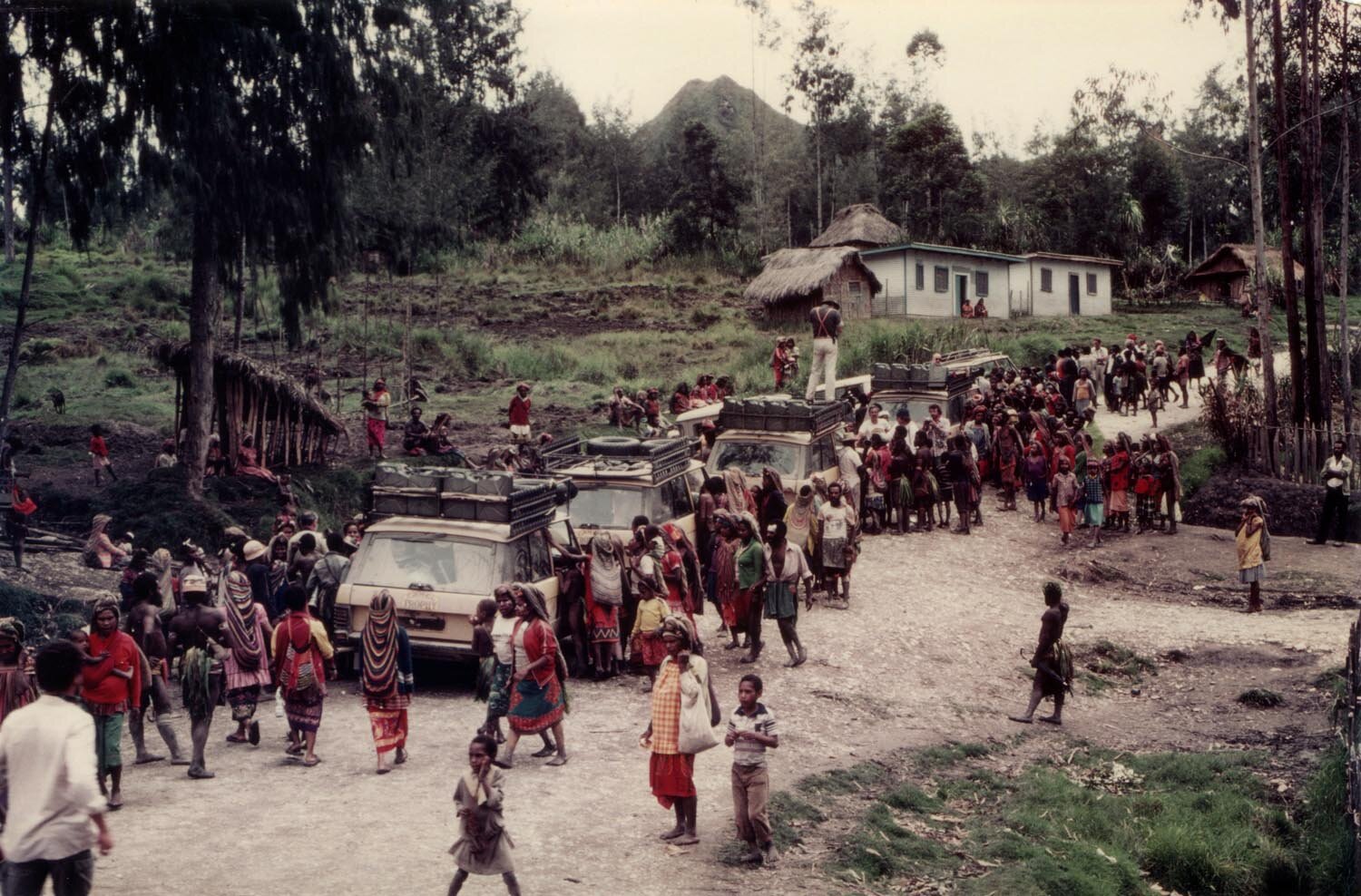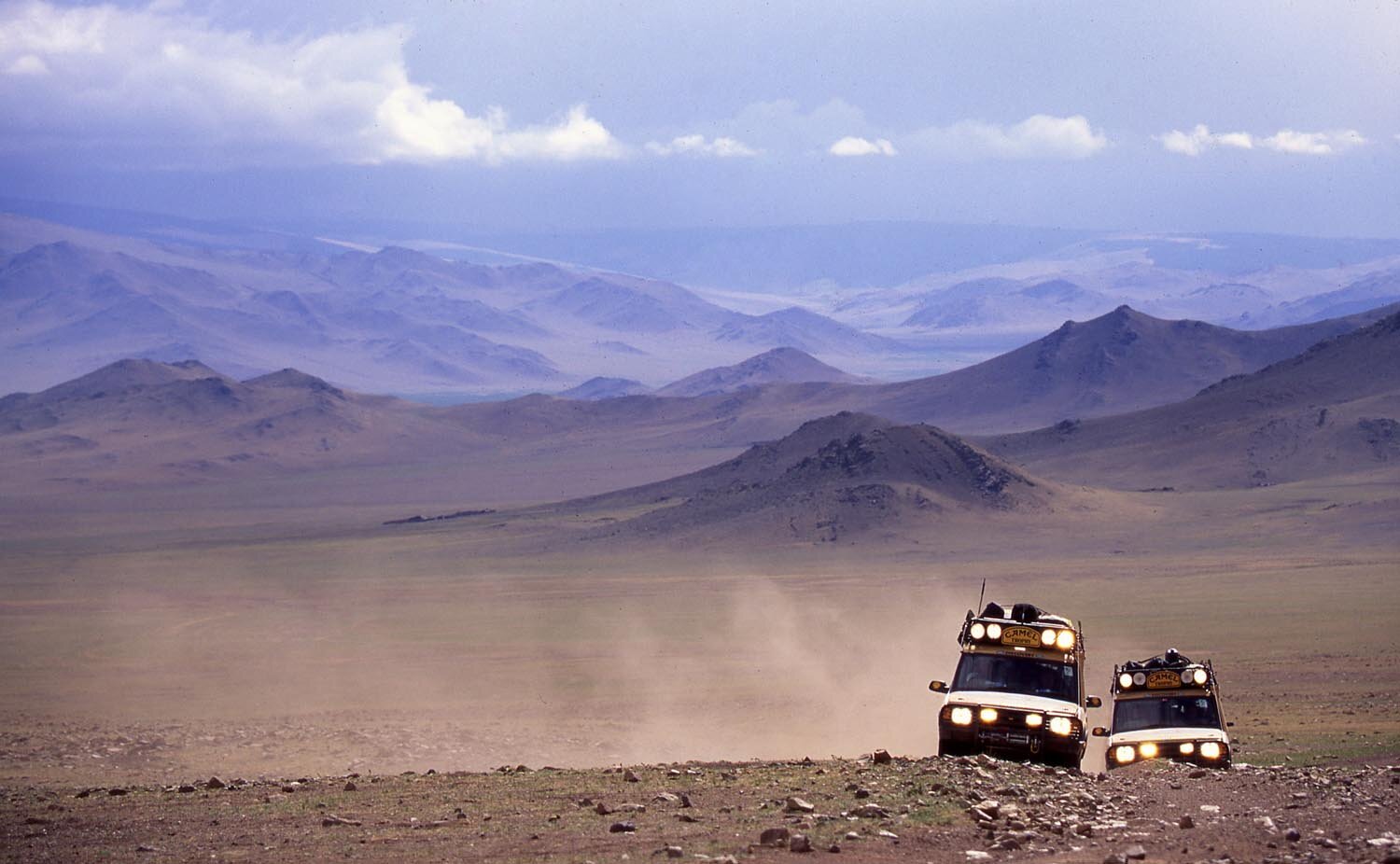The Camel Trophy was the world's greatest driving adventure
The Camel Trophy wheelie was the ultimate off-road event
Photo Lee Farrant Photography
For 20 years the Camel Trophy was the toughest automotive challenge on the planet, taking amateur drivers from all over the world into the most inhospitable terrain.
Photographer Nick Dimbleby rode along for four years and has now documented the whole journey of the event in an epic tome titled: Camel Trophy - The Definitive History.
It’s an amazing book, filled with some of the most dramatic driving imagery you’ll ever see. Land Rovers submerged in rivers, dug deep into sand and mired in mud tend to dominate, but it’s also full of people overcoming mental and physical obstacles through ingenuity and teamwork. A tribute to the human spirit.
In this extract, and the exclusive photos he provided, Nick gives an overview of what made the Camel Trophy such a unique experience for the hundreds that took part and the millions that watched from afar.
Picking the best route through on the second international Camel Trophy, Zaïre 1983
Photo Camel Trophy Club
“Competition, expedition or adventure? Photoshoot, advertising campaign or tobacco smokescreen? Whatever you might think of Camel Trophy, in the 20 years that the self-styled ‘Legend in Adventure’ existed, it was all of these things and more. It was a trip into the unknown, a great way to capture spectacular film and photo footage, a place where incredible experiences happened every day, a true adventure. Camel Trophy was a dream for many and an amazing opportunity for a few.
For the lucky competitors, media and staff that went on the event, each Camel Trophy was an experience that money couldn’t buy. Unlike other motorsports events or 4x4 competitions you couldn’t buy yourself a seat on Camel Trophy. The event prided itself in that it was only open to amateurs: to be in with a chance of a place you just had to be over 21, not have a competition or racing licence and not be a serving member of the armed forces. You didn’t need to be rich to take part in a Camel Trophy. “You paid for your entry on the event with blood, sweat, tears…and a sense of humour,” said former event co-ordinator Duncan Barbour.
The idea behind the event was that ‘normal’ people could escape from the routine of everyday life and go on the adventure of a lifetime. Of course, the rigorous selection procedure made sure that most of the competitors chosen were far from ‘normal’. Over the years quite a remarkable collection of people took part, be they competitors, support staff or media. Camel Trophy’s book of alumni is a real who’s who of interesting people - the sort of people that would make a great set of dinner guests.
Taking a year at random, 1985 for example, the competitors that year included: a specialist in tropical medicine, a mechanic, a former fighter pilot, the owner of a chain of pizza restaurants, an accountant, several company directors, a policeman and a forestry engineer.
Fortunately Camel Trophy Land Rovers were fitted with snorkels
Photo Lee Farrant Photography
The Camel Trophy is an event that is inextricably linked with Land Rover and it is the film and photography of expedition-equipped Sandglow yellow Land Rovers - more often than not submerged up to their windscreens in water - that will remain the most enduring of all the Camel Trophy images. With roof lights blazing each side of that famous Camel Trophy plaque, six different models of Land Rover have featured in 17 Camel Trophys, driving in conditions ranging from glutinous mud to virgin snow, with every other conceivable surface in between. No wonder that Land Rover enthusiasts the world over still consider Camel Trophy to be biggest and best showcase of Land Rovers off-road ever.
Over time the event changed, evolved and adapted for a variety of reasons: to counter tobacco legislation, to meet the changing priorities of the parent company paying the bills, to address the concerns of environmentalists who didn’t appreciate the sight of 4x4s driving through the natural environment, and also to appeal to a different audience as national tastes and expectations developed.
But throughout its 20 years of existence, Camel Trophy remained popular. In the later years of the event, it was estimated that over a million men and women from all around the world applied to take part. Camel Trophy was neither a race nor a rally, but a combination of adventure, expedition, competition and a unique display of personal courage, resilience and driving ability. For the most part it stuck to a well-tested formula: using Land Rovers to explore and drive through some of the world’s most exotic, rugged and treacherous terrain, always – despite what critics may have said – using existing tracks to minimise the environmental impact.
Along the way, the international teams took part in a number of set tasks, some of which were competitive (completing a navigational test, a time/speed/distance run or a task requiring vehicle knowledge for example), while others were designed to leave a lasting legacy: the building of a remote research station, taking part in an activity that would benefit the local population or maybe repairing a bridge over a river. Repairing a bridge not only allowed the convoy to move forward, it also left something tangible behind for the locals to enjoy and use.
For most people however, it was the drive from start to finish that was the heart and soul of Camel Trophy. The challenging route was a trip into the unknown, where every decision made a difference. All the teams, media and support staff set out with one goal: to make it to the end by whatever means necessary. From the barren harshness of the Atacama Desert in Chile to the humid jungles of Borneo and Brazil, the adventurers were tested every inch of the way on an event that pitted man and machine (and it was only men for the first 14 years, 1981 excepted) against the unpredictable demands of landscape and climate.
Class of '93 at the International Selections
Photo Lee Farrant Photography via Camel Trophy Club
The people that made Camel Trophy happen were an extraordinary bunch of individuals. They came from a variety of different backgrounds, but all had a common thread that made them the ‘right stuff’ for Camel Trophy. Former 1992 Team UK competitor and support driver Tim Dray said: “We were all from a similar mould. You knew in the back of your mind that everyone around you was capable of saving your life. And you were capable of saving theirs. Luckily it never had to happen, but having that safety net there gave you confidence.”
The event was staged in some of the world’s most spectacular locations: The Amazon jungle, the equatorial rainforests of Sumatra, Borneo and Sulawesi, the plains of Mongolia, the magnificent Taiga of East Siberia and even the Pacific Ocean in 2000. This range of dream locations made the Camel Trophy an aspirational event – especially as it cost the participants nothing to take part.
Of course, because it cost nothing to enter, that there was never any pay or prize money for the winning competitors either; but this amateur ‘just for fun’ competitive element was what made Camel Trophy special. The ultimate goal was being able to hold the Camel Trophy aloft in front of your fellow competitors, for the glory of your country.
In reality though, the real achievement was not to win, but to get to the finish. Indeed, one of the Camel Trophy’s slogans in the later years was: “Winning is Part. Taking Part is All.” For everyone on the event it was a life-changing experience.
It’s debatable whether an event like Camel Trophy could ever happen again today. Although 1980 is in recent memory of many people, the world has changed a lot since then, not least because global communication and the internet has made most of the planet less remote. In Papua New Guinea in 1982, the Camel Trophy convoy was stopped by locals brandishing knives and spears, and it was reported at the time that they were convinced that the strange looking people in yellow Range Rovers were monster chasers or evil spirits. The vehicles were strange, fast moving things with bright burning eyes that were some kind of witchcraft. For that remote tribe, Camel Trophy brought a taste of the modern age, but in this globally connected world for that to happen now would be almost unthinkable.
The legacy of Camel Trophy is strong, even though it is now over twenty years since the last event was held at the beginning of the 21st Century. The world may have changed, the event has long gone, but the desire to seek out new challenges, push yourself as an individual and experience the unknown is something that is as relevant today as it ever was. As the marketeers at Camel Trophy suggested back in 1997: ‘You’ve only got One Life. Live it.’
Camel Trophy The Definitive History is available now from Porter Press.










